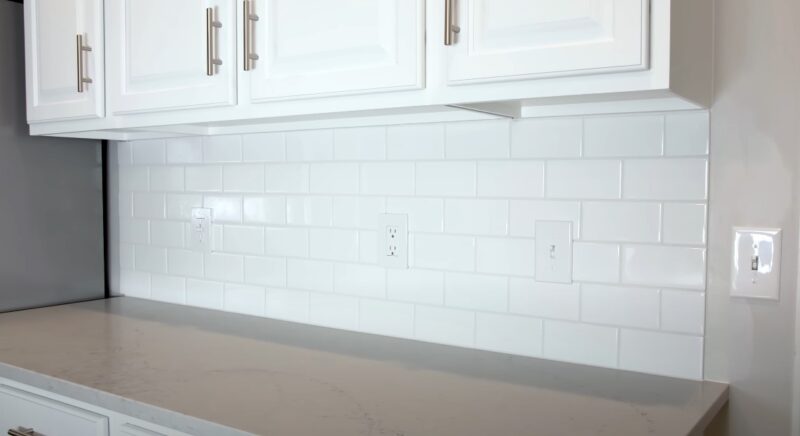1. Tools and Materials Required
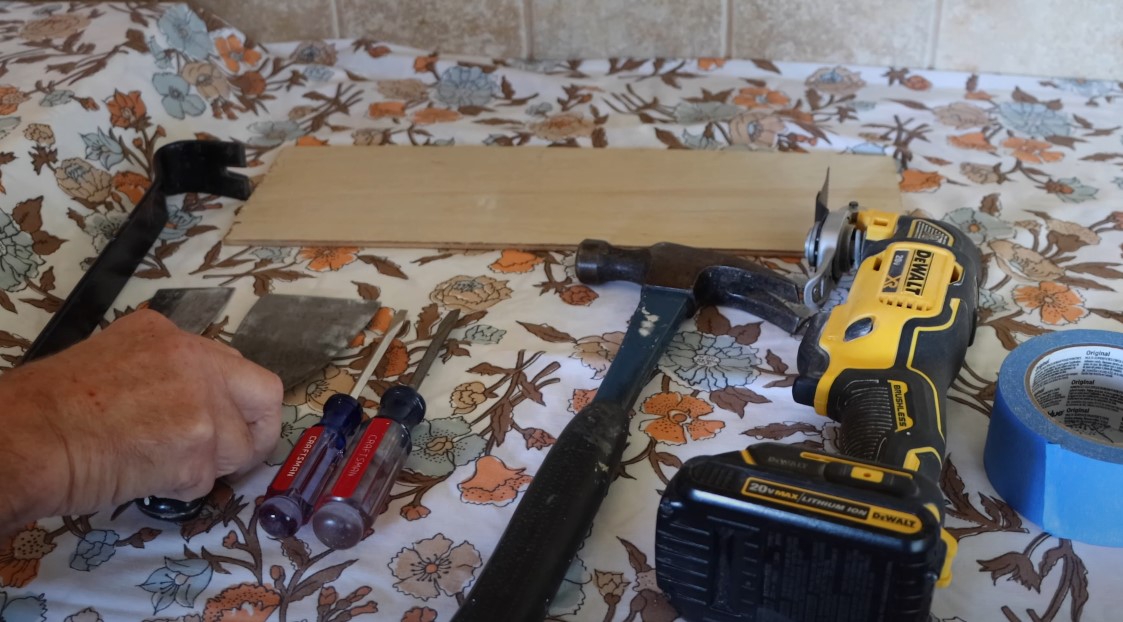
Safety glasses are vital for protecting your eyes from flying debris, while sturdy gloves shield your hands from sharp edges and jagged tiles.
Wearing a long-sleeve shirt, pants, and sturdy boots further minimizes the risk of injury, providing an extra layer of protection against potential hazards.
For the actual tile removal, basic tools are a must.
A hammer or rubber mallet allows you to apply controlled force where necessary, particularly when dealing with stubborn tiles.
Basic Tools:
- Pry bar
- Utility knife
- Hammer or rubber mallet
- Putty knife or 6-in-1 painter’s tool
Beyond the basics, certain additional tools can streamline the process and make it more efficient.
A caulk removal tool, for example, simplifies the task of removing old caulk, which is often found around the edges of tiles.
A multi-tool equipped with a grout removal blade is useful for breaking the bond between tiles and the wall, ensuring a smoother removal process.
2. Preparing the Area
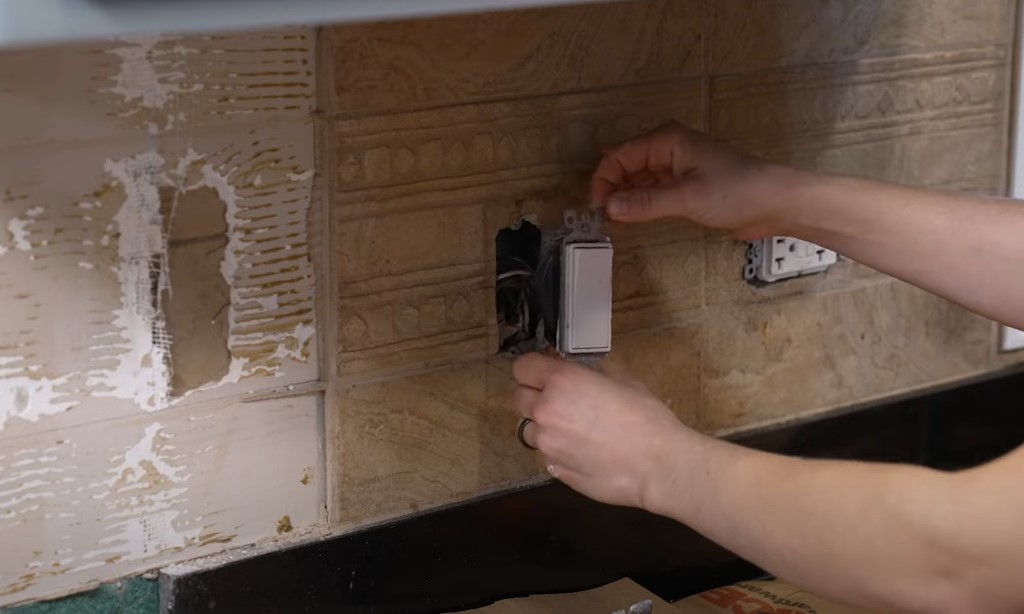
Next, remove any obstructions that could hinder your work.
It includes taking off outlet covers and trim, which can be done with a screwdriver and pry bar.
In some cases, you might need to remove cabinets or other fixtures to gain better access to the backsplash, though this step is optional and depends on your specific kitchen setup.
Once the area is clear, focus on protecting your kitchen’s surfaces.
Cover your countertops and floors with cardboard and plastic sheeting to shield them from falling debris and potential damage.[/su_note]
Secure these protective materials with painter’s tape to prevent them from moving during the removal process.
Taking these precautions will protect your kitchen and make the cleanup process much easier when the project is complete.
3. Removing the Tile Backsplash
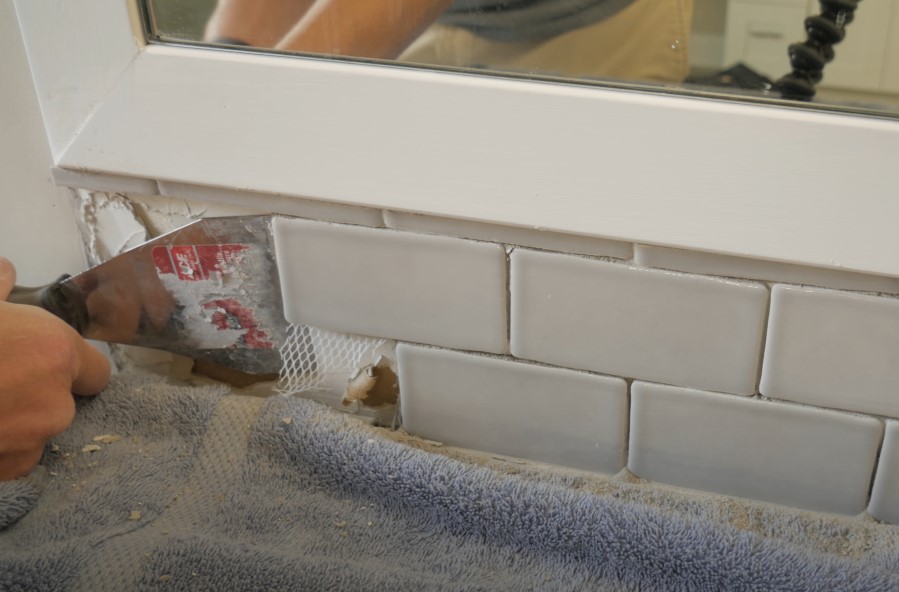
Once you know what you’re dealing with, begin by removing the caulk and grout.
Begin removing the tiles by starting at the edges or in an inconspicuous area, such as behind appliances.
Insert the putty knife or pry bar behind a tile and gently pry it away from the wall.
For tiles that are particularly stubborn, use a hammer to carefully break them into smaller pieces, making them easier to remove.
Work in small sections, taking your time to avoid causing unnecessary damage to the drywall.
Keep your tools parallel to the wall as much as possible to minimize any damage.
4. Cleaning Up After Tile Removal
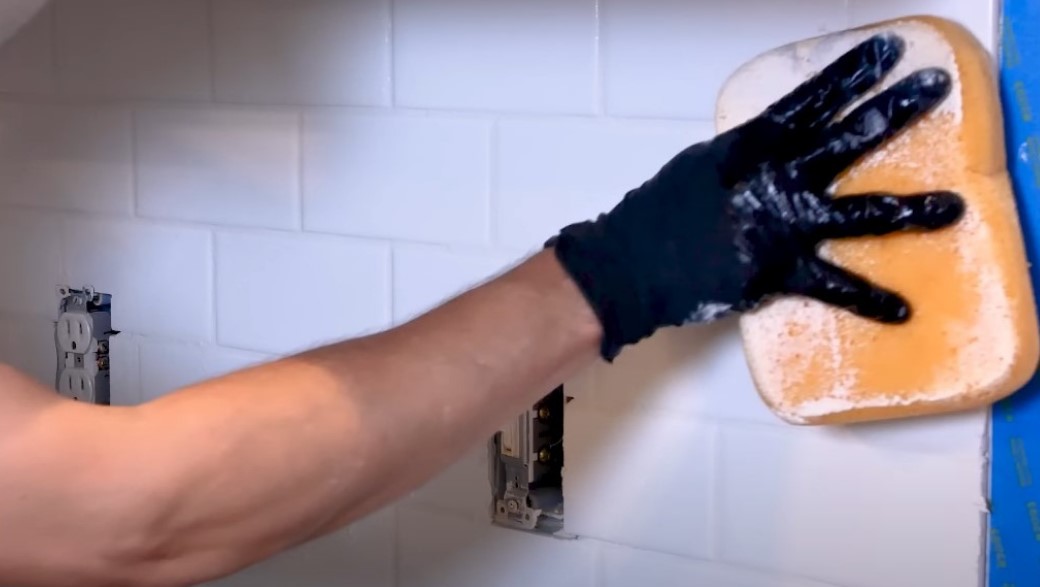
Once the tiles are removed, the next step is cleaning up the residual adhesive left on the wall.
The process requires patience and attention to detail.
Use a putty knife or a specialized adhesive remover to scrape off the remaining adhesive.
Be cautious during this step to avoid damaging the drywall underneath.
If the adhesive is particularly stubborn, a bit of warm water and a sponge can help loosen it up, making it easier to remove.
After the adhesive is gone, inspect the wall for any damage caused during tile removal.
It’s common to find small nicks or gouges in the drywall, which will need to be repaired before proceeding with a new backsplash.
Use drywall joint compound to fill in any damaged areas, applying it smoothly and evenly.
5. Final Steps
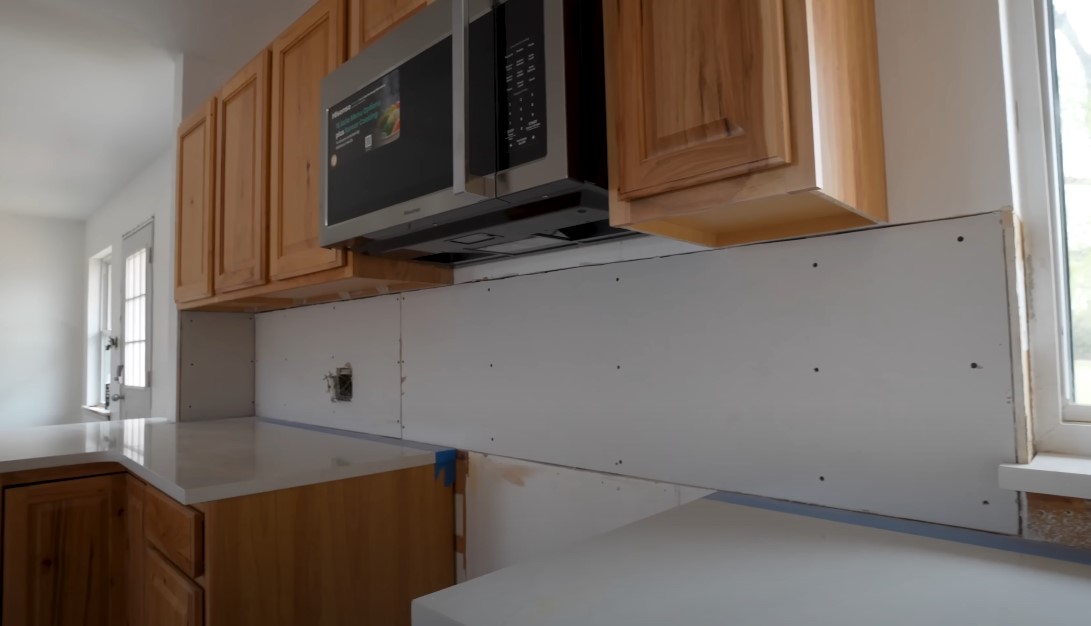
First and foremost, take the time to ensure that the wall is thoroughly cleaned and smooth.
Any residual dust, dirt, or adhesive remnants can compromise the adhesion of the new backsplash, leading to potential issues down the line.
If you haven’t already considered it, now is the perfect time to evaluate the condition of the wall and decide whether a fresh coat of paint is necessary.
Even if the new backsplash covers most of the wall, painting it beforehand can create a uniform look and serve as a clean backdrop for your installation.
Next, take some time to carefully select the new backsplash.
This is your opportunity to inject your style into your kitchen and make a statement.
Consider the color scheme, texture, and overall design of your kitchen to ensure that your new backsplash complements the existing elements.
Don’t rush this decision: look and feel your space.

